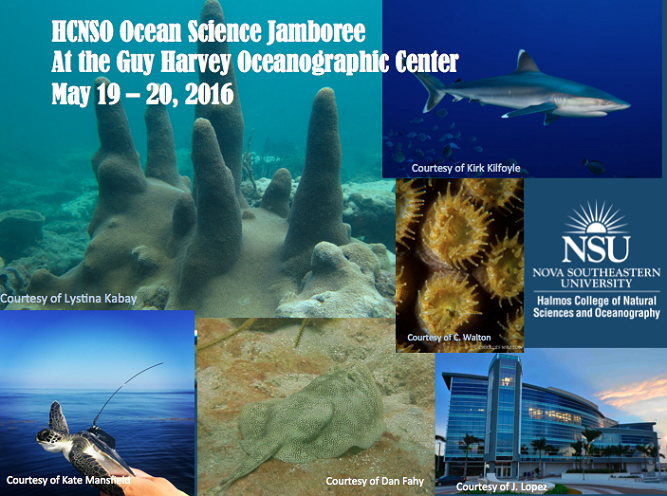Surface Dynamics of Crude and Weathered Oil in the Presence of Dispersants: Laboratory Experiment and Numerical Simulation
Location
Guy Harvey Oceanographic Center Facility
Start
5-20-2016 12:00 PM
End
5-20-2016 12:15 PM
Abstract
Marine oil spills can have dire consequences for the environment. Research on their dynamics is important for the well-being of coastal communities and their economies. Propagation of oil spills is a very complex physical-chemical process. As seen during the Deepwater Horizon event in the Gulf of Mexico during 2010, one of the critical problems remaining for prediction of oil transport and dispersion in the marine environment is the small-scale structure and dynamics of surface oil spills. The laboratory experiments conducted in this work were focused on understanding the differences between the dynamics of crude and weathered oil spills and the effect of dispersants. After deposition on the still water surface, a drop of crude oil quickly spread into a thin slick; while at the same time, a drop of machine (proxy for weathered) oil did not show significant evolution. Subsequent application of dispersant to the crude oil slick resulted in a quick contraction or fragmentation of the slick into narrow wedges and tiny drops. Notably, the slick of machine oil did not show significant change in size or topology after spraying dispersant. An advanced multi-phase, volume of fluid computational fluid dynamics model, incorporating capillary forces, was able to explain some of the features observed in the laboratory experiment. As a result of the laboratory and modeling experiments, the new interpretation of the effect of dispersant on the oil dispersion process including capillary effects has been proposed, which is expected to lead to improved oil spill models and response strategies.
Surface Dynamics of Crude and Weathered Oil in the Presence of Dispersants: Laboratory Experiment and Numerical Simulation
Guy Harvey Oceanographic Center Facility
Marine oil spills can have dire consequences for the environment. Research on their dynamics is important for the well-being of coastal communities and their economies. Propagation of oil spills is a very complex physical-chemical process. As seen during the Deepwater Horizon event in the Gulf of Mexico during 2010, one of the critical problems remaining for prediction of oil transport and dispersion in the marine environment is the small-scale structure and dynamics of surface oil spills. The laboratory experiments conducted in this work were focused on understanding the differences between the dynamics of crude and weathered oil spills and the effect of dispersants. After deposition on the still water surface, a drop of crude oil quickly spread into a thin slick; while at the same time, a drop of machine (proxy for weathered) oil did not show significant evolution. Subsequent application of dispersant to the crude oil slick resulted in a quick contraction or fragmentation of the slick into narrow wedges and tiny drops. Notably, the slick of machine oil did not show significant change in size or topology after spraying dispersant. An advanced multi-phase, volume of fluid computational fluid dynamics model, incorporating capillary forces, was able to explain some of the features observed in the laboratory experiment. As a result of the laboratory and modeling experiments, the new interpretation of the effect of dispersant on the oil dispersion process including capillary effects has been proposed, which is expected to lead to improved oil spill models and response strategies.


